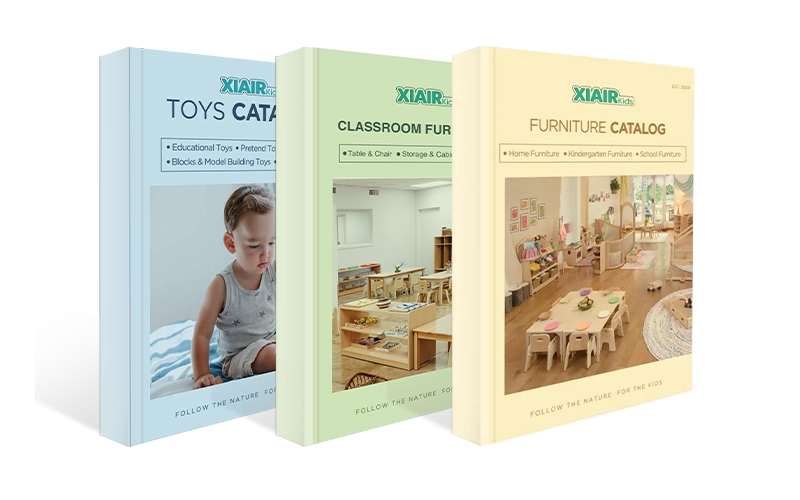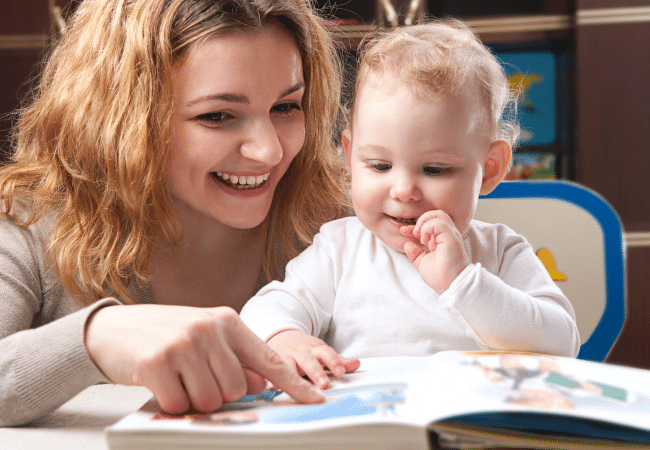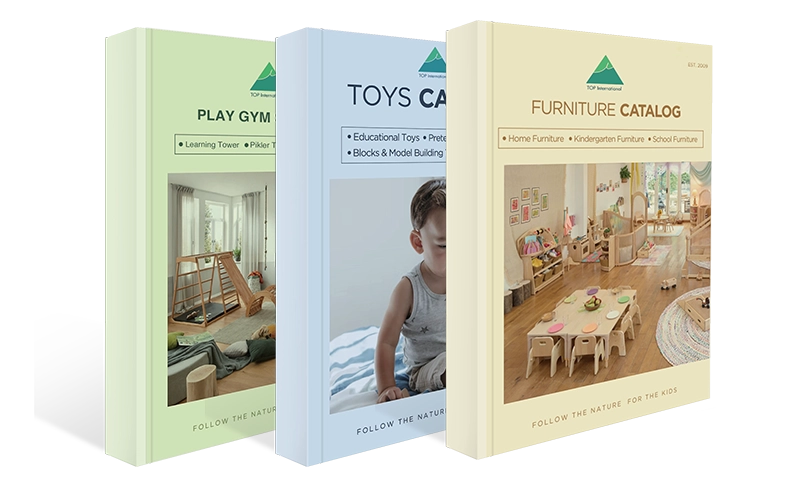هل أنت قلق بشأن طفلك؟ تنمية مهارات القراءة والكتابة المبكرة وتتساءل كيف يمكن مساعدتهم على بناء مهارات القراءة والكتابة الأساسية منذ سن مبكرة؟
Many parents and educators feel overwhelmed by the complexities of emergent literacy and how to nurture a child’s development in this crucial stage properly. Without a strong foundation in early literacy skills, children may struggle to catch up in later years, potentially affecting their academic performance and confidence in learning.
الخبر السار هو أنه من خلال فهم عملية محو الأمية الناشئة والمشاركة في أنشطة بسيطة وعملية، يمكنك مساعدة طفلك على تطوير مهارات أساسية تُمهّد له الطريق نحو النجاح في القراءة. ستستكشف هذه المقالة أهمية محو الأمية الناشئة، وتقدم استراتيجيات وأنشطة عملية لدعم نمو محو الأمية المبكرة لدى الأطفال.

1. What is Emergent Literacy?
يُشير مصطلح "محو الأمية الناشئة" إلى المهارات والمعارف والمواقف التي يكتسبها الأطفال عند تفاعلهم مع اللغة المكتوبة والمنطوقة. تحدث هذه التجارب المبكرة لمحو الأمية قبل بدء تعليم القراءة والكتابة الرسمي، وغالبًا ما تحدث خلال مرحلة ما قبل المدرسة. لا يقتصر محو الأمية الناشئة في مرحلة ما قبل المدرسة على تعلم الحروف الأبجدية فحسب، بل يشمل أيضًا تطوير مجموعة من المهارات.
نظرية ماري كلاي لمحو الأمية الناشئة

ماري كلاي, a renowned researcher in early childhood education, developed the emergent literacy theory. This theory is premised on the idea that children bring their unique experiences and knowledge to learning to read and write. Clay emphasized that children’s early literacy behaviors are influenced by their interactions with the world around them, including caregivers, peers, and the environment.
تُسلّط نظرية كلاي الضوء على أهمية مشاركة الأطفال بفاعلية في تنمية مهاراتهم القرائية. ووفقًا لبحثها، يتعلم الأطفال بشكل أفضل عند تواجدهم في بيئات غنية بالمطبوعات، وتتاح لهم فرص التفاعل مع الكتب، وتلقيهم التوجيه من مُقدّمي الرعاية أو المُعلّمين الذين يُمثّلون نموذجًا يُحتذى به في سلوكيات القراءة والكتابة.
تعريف محو الأمية الناشئة
محو الأمية الناشئ هو العملية التي يطور من خلالها الأطفال الصغار فهمهم للغة المكتوبة والمنطوقة قبل أن يتمكنوا من القراءة أو الكتابة بشكل مستقل. تتضمن هذه المرحلة المبكرة من تطور محو الأمية فهم مفاهيم الطباعة، مثل تمييز الحروف والأصوات والكلمات، وإدراك أن الطباعة تحمل معنى.
في جوهره، يتمحور محو الأمية الناشئة حول إرساء أسس مهارات القراءة والكتابة المستقبلية. يبدأ هذا التأسيس باستكشاف الأطفال لبيئتهم، وسماعهم للغة، وتفاعلهم مع الكبار من خلال القراءة والمحادثة واللعب. ومن خلال هذه التجارب المبكرة، يكتسب الأطفال وعيًا ببنية اللغة واستخدامها، مما يضعهم على طريق تطوير مهارات القراءة والكتابة.
لقد كان لنظريتها تأثير دائم على تعليم الطفولة المبكرة، حيث أثرت على كيفية تعامل المعلمين مع تدريس القراءة والكتابة في المرحلة الناشئة من تطور محو الأمية.
2. The Importance of Emergent Literacy
تُعدّ معرفة القراءة والكتابة الناشئة أساسيةً لتنمية مهارات القراءة والكتابة اللاحقة. سيركز هذا القسم على العلاقة بين معرفة القراءة والكتابة الناشئة وتطور اللغة، مُسلّطًا الضوء على المجالات الرئيسية التي تُسهم في تعلم الطفولة المبكرة، بما في ذلك الوعي الصوتي، والوعي بالمطبوعات، واكتساب المفردات، وتعزيز حب القراءة.

محو الأمية الناشئة وتنمية اللغة
يرتبط محو الأمية المبكر ارتباطًا وثيقًا بتطور اللغة؛ ويرتبط محو الأمية الناشئ وتطور اللغة ارتباطًا وثيقًا. كلما زاد تعرض الأطفال للغة المنطوقة أو المكتوبة، زادت فرصهم في تطوير مهارات قراءة وكتابة قوية. يشمل تطور اللغة فهم القواعد وبنية الجمل والمفردات. يُعد هذا الأساس أساسيًا لإعداد الأطفال للقراءة والكتابة بنجاح.
Children acquire the language skills necessary to make sense of written texts later on through activities such as reading aloud, storytelling, and engaging in conversations. Listening to stories helps children understand narrative structures and expands their vocabulary, which is essential for developing literacy.

Receive a free catalog and custom layout to help you design your ideal classroom easily.
تعزيز التعلم في مرحلة الطفولة المبكرة
يُعدّ تعزيز مهارات القراءة والكتابة الناشئة أمرًا أساسيًا للتطور المعرفي والنجاح الأكاديمي. يتقبل الأطفال بشكل خاص تعليم اللغة والقراءة والكتابة خلال السنوات الأولى من حياتهم، لذا فإن تعزيز مهارات القراءة والكتابة خلال هذه الفترة يمكن أن يكون له آثار طويلة الأمد. تشجع تجارب القراءة والكتابة المبكرة - مثل قراءة الكتب لهم، وممارسة ألعاب الكلمات، ومناقشة القصص - الأطفال على تنمية حب القراءة.
علاوة على ذلك، تُسهم أنشطة محو الأمية الناشئة لمرحلة ما قبل المدرسة في تنمية هذا الشغف بالتعلم. تدعم هذه الأنشطة الجذابة تنمية التفكير النقدي، وفهم اللغة، والمهارات الاجتماعية، وهي جميعها ضرورية للنجاح في المدرسة والحياة.
تطوير اللغة
يُعدّ تطوير اللغة من أهم فوائد أنشطة القراءة الناشئة لمرحلة ما قبل المدرسة. خلال هذه السنوات المبكرة، يُوسّع الأطفال مفرداتهم ويُطوّرون فهمهم لبنية اللغة. تُعزّز أنشطة مثل القافية والغناء ورواية القصص فهم الأطفال للغة وقدرتهم على التواصل.
يمكن لمقدمي الرعاية والمعلمين أن يساهموا بشكل كبير في تطوير لغة الطفل من خلال توفير الفرص للمشاركة في أنشطة غنية باللغة، مثل قراءة القصص والتفاعل مع الآخرين.

الوعي الصوتي
Phonological awareness is another cornerstone of emergent literacy skills in early childhood education. Phonological awareness involves recognizing and manipulating the sounds of language. Children develop this skill through games, songs, and rhyming activities that help them identify syllables, rhymes, and individual sounds.
هذه المهارة أساسية للقراءة، إذ تساعد الأطفال على فك رموز الكلمات بربط الأصوات بالحروف. على سبيل المثال، الأطفال الذين يستطيعون تمييز الصوت الأول في كلمة "قطة" (صوت "ج") يكونون أكثر قدرة على قراءة وفهم الكلمات الجديدة في المستقبل.
الوعي بالطباعة
يشير الوعي بالطباعة إلى إدراك الطفل أن للطباعة معنىً، وأنها تُستخدم لتوصيل الأفكار. ويشمل ذلك إدراك أن الكلمات تُقرأ من اليسار إلى اليمين، وأن الكتابة تُقابل الكلمات المنطوقة. ومن خلال أنشطة القراءة الناشئة، يتعلم الأطفال أن للكتب غلافًا أماميًا وخلفيًا، وأن الصفحات تُقلب في اتجاه محدد، وأن الكلمات على الصفحة تُشكل قصة.
إن تشجيع الأطفال على النظر إلى الكتب، والإشارة إلى الكلمات، والتحدث عن الصور أثناء القراءة يُعزز هذا الوعي. كلما زاد تفاعل الأطفال مع الكتب، ازداد وعيهم بالمطبوعات، مما يُهيئ البيئة المناسبة لتعليم القراءة بشكل أكثر رسمية.

اكتساب المفردات
يُعدّ بناء مفردات قوية عنصرًا أساسيًا في محو الأمية الناشئة. تنمو مفردات الأطفال من خلال التفاعل مع الكبار، وقراءة القصص، والمشاركة في الحوارات. إن سماع كلمات جديدة واستخدامها في سياقات مختلفة يساعد الأطفال على فهم معانيها وتعلم كيفية استخدامها بفعالية في التحدث والكتابة.
إن تطوير مفردات قوية يُعزز قدرة الطفل على فهم النصوص والتعبير عن أفكاره بوضوح. واكتساب المفردات أمرٌ أساسي لقراءة اللغة المنطوقة وفهمها، وللأداء الجيد في المدرسة.
حب القراءة
Finally, one of the most critical aspects of emergent literacy is fostering a love for reading. Children who develop a positive attitude towards books and reading are likelier to engage in independent reading later in life. Reading aloud to children, exposing them to various books, and encouraging them to “read” independently are all strategies that help build this love.

3. How Children Develop Literacy?
Literacy development is a gradual, multi-stage process that begins at birth and continues into adulthood. It involves acquiring various skills, from recognizing sounds and symbols to understanding complex texts and expressing ideas through writing. Each phase of literacy development builds upon the previous one, and understanding these stages helps parents and educators provide age-appropriate support. While children progress at different rates, there are five generally recognized stages in literacy development, each marked by distinct learning milestones.
Emergent Literacy (0–5 years of age)
Children begin to understand the basics of communication and printed language during the emergent literacy stage. This phase starts from birth, as babies and toddlers are immersed in the sounds of spoken language. Through exposure to books, conversations, songs, and storytelling, children begin to grasp that language has structure and meaning. By age five, many can recognize letters, understand that text conveys information, and show interest in “reading” familiar books by memory.

Alphabetic Fluency (5–8 years of age)
As children enter school, they transition into the alphabetic fluency stage. Here, they decode words using letter-sound relationships and recognize common sight words. Children learn how letters form sounds and how these sounds form words—a critical step toward fluent reading. They also begin to write using simple sentences and invented spelling based on how words sound.

Words and Patterns (7–9 years of age)
In the words and patterns stage, children recognize patterns within words, such as prefixes, suffixes, and word families. This stage overlaps with alphabetic fluency but introduces more complex spelling and vocabulary rules. Children develop a deeper understanding of language conventions, punctuation, and grammar. They move from sounding out every word to recognizing word chunks, which increases reading speed and accuracy.

Intermediate Reading (9–15 years of age)
The intermediate reading stage shifts from “learning to read” to “reading to learn.” Children are now able to tackle more complex texts across a variety of subjects. They read for enjoyment and to gather information, analyze ideas, and think critically. At this stage, vocabulary grows rapidly as children encounter more technical and content-specific words, especially in science, history, and literature.

Advanced Reading (15 to adult)
In the advanced reading stage, literacy is no longer a skill being learned—it is a tool used for higher-level thinking, communication, and exploration. Teenagers and adults in this phase can interpret abstract ideas, analyze arguments, and read across genres and disciplines. They can form well-supported opinions, conduct independent research, and communicate ideas through sophisticated writing.

Decoding: Decoding is translating written symbols into sounds and words. It relies on understanding letter-sound relationships and is essential for early reading success. Mastery of phonics supports accurate and fluent reading.
Fluency: Fluency is reading with speed, accuracy, and proper expression. Fluent readers can focus on comprehension rather than decoding each word. Repeated reading and oral practice help build fluency.
Vocabulary: A strong vocabulary enables children to understand what they read and express themselves clearly. Vocabulary grows through conversation, reading, and exposure to diverse texts. It’s a key predictor of reading comprehension.
Sentence Structure and Cohesion: Understanding how sentences are formed and connected improves reading comprehension and writing clarity. Teaching grammar, conjunctions, and transitions helps students express ideas logically and read with better understanding.
Experience, Reasoning, and Background Knowledge: Prior knowledge and life experiences shape how children understand texts. The more they know, the easier it is to make inferences, draw conclusions, and connect new ideas to existing ones.
Working Memory and Attention: Working memory allows children to hold and process information while reading, while attention helps them stay focused. Both are critical for understanding longer texts, following plots, and completing reading tasks effectively.
4. Suitable Emergent Literacy Activities for Preschoolers
Developing emergent literacy skills during preschool is essential to building a strong foundation for future reading and writing. Young children learn best through play, repetition, and interaction, making choosing engaging, developmentally appropriate activities rooted in language-rich experiences essential.
ألعاب الوعي الصوتي
Games like rhyming, clapping syllables, or “I Spy” with sounds enhance children’s ability to hear and manipulate language. These skills are essential for decoding words later on. Keep it playful and consistent for maximum effect. Try tongue twisters or simple chants to reinforce beginning sounds. Sort objects or pictures by their starting sounds for a hands-on experience. Encourage children to create their own rhymes or silly sound combinations.
أنشطة الكتابة التفاعلية
Let children draw, scribble, or “write” their own stories. Offer crayons, markers, and writing prompts. Encourage them to talk about what they’re drawing or “reading” back their stories. Introduce name-writing early to personalize their writing journey. Use story starters to inspire creativity and encourage sentence building. Allow invented spelling to be a natural part of early writing development.
أنشطة التعرف على الحروف الأبجدية
Use songs, flashcards, and magnetic letters to teach letter names and sounds. Focus on the letters in the child’s name first. Make learning multisensory with hands-on materials and repetition to help retention.
Incorporate movement by having children form letters with their bodies or in sand. Play alphabet matching or memory games to reinforce recognition. Create letter-of-the-week activities to focus on one sound at a time.

استكشاف الوعي بالطباعة
Label everyday items around the house or classroom. Point out signs, menus, and packaging to show how print is used. Let children help write grocery lists or notes. Use daily routines—like setting the table or cleaning up—as opportunities to spot and use print. Provide books with clear print and point to words as you read aloud. Encourage children to notice environmental print, like store logos or street signs.
Take Your Time
When reading, pause to discuss the pictures, repeat new words, and allow your child to ask questions. Rather than rushing through a story, encourage your child to predict what will happen next or retell it in their own words. These actions develop comprehension, sequencing skills, and vocabulary. The same goes for routine tasks—describe what you are doing, name objects, and allow children to respond. The more time you give for these interactions, the deeper their engagement and learning.
Build on Their Words
Children often say the most imaginative things. Use those moments as opportunities to build their language and literacy skills. When your child says a word or a sentence, expand on it. For example, if a child says, “dog bark,” you might respond, “Yes, the big brown dog is barking loudly because he hears a noise.” This affirms the child’s words and introduces them to new vocabulary, sentence structure, and ideas.
Let Your Child “Write”
Ask them to “read” their writing to you, even if it’s just a string of marks or drawings. This builds confidence and reinforces the concept that writing is a way to express thoughts. As children gain more control over their fine motor skills, guide them gently towards forming shapes and letters, starting with the letters in their names. You can also use tools like sand trays, finger paints, or salt writing boards to make writing more sensory and fun. Activities that develop fine motor coordination—like playing with playdough, stringing beads, or using tongs—also support the physical skills needed for writing.
Play Word Games
Word play is a fun and effective way to build phonological awareness, which is the ability to recognize and manipulate the sounds in words—a critical skill for learning to read. Depending on your child’s age and development, you can adjust the complexity of the games.
Babies
Word games focus on sound exposure and listening for babies. Sing nursery rhymes, talk about what you’re doing, and play peekaboo while emphasizing specific words. Babies are naturally drawn to rhythm and repetition, which supports language learning. Name body parts, toys, and actions throughout the day to build their receptive vocabulary.
Toddlers
With toddlers, begin introducing rhyming games and songs. Use fingerplays like “Itsy Bitsy Spider” or “Wheels on the Bus” that incorporate movements and rhymes. Ask them to find objects that rhyme or start with a specific sound. Repeat their responses and add more detail to keep them engaged and learning.
Preschoolers
Preschoolers can begin playing more structured word games. Try “I Spy” with sounds like “I spy something that starts with the ‘b’ sound.” Introduce alliteration and let them devise silly phrases like “Sammy snake sips soup.” You can also play matching games with picture cards, where they match images based on beginning sounds or rhyming words.
These games build awareness of how language sounds and functions, providing a strong foundation for decoding words when they begin to read.

5. How to Promote Emergent Literacy in the Classroom?
Promoting emergent literacy in the classroom is essential to creating a strong foundation for children’s future reading and writing abilities. As educators, creating an environment that supports the development of language, phonological awareness, and print concepts is crucial. Below, we’ll explore several classroom strategies for promoting emergent literacy.
إنشاء الروتينات
يُعدّ وضع روتين منتظم من أكثر الطرق فعالية لتعزيز مهارات القراءة والكتابة الناشئة في الفصل الدراسي. يُشعر الروتين الأطفال بالأمان ويساعدهم على فهم روتين اليوم، مما يُعزز التعلم. كما يُتيح الروتين المُنتظم للأطفال ممارسة مهارات القراءة والكتابة خلال الأنشطة اليومية.
For instance, you can create a morning routine where children have time to engage with books. Start the day by reading aloud a simple, engaging story. During circle time, you could introduce new vocabulary words, ask children to repeat after you, and practice letter recognition by pointing to the letters in the room. As children become familiar with these routines, they will naturally pick up language skills, especially when they can predict what comes next.
Another key part of establishing routines is to incorporate repetitive language. During daily activities, songs, rhymes, and familiar phrases can significantly help reinforce phonological awareness, a key component of emergent literacy. When children hear rhymes or repeat words in songs, they begin recognizing patterns in language, which strengthens their early reading skills.
اقرأ كثيرًا
القراءة بصوت عالٍ للأطفال بانتظام من أكثر الطرق فعالية لتعزيز مهارات القراءة الناشئة. جلسات القراءة المتكررة تُعرِّف الأطفال على مفردات جديدة، وهياكل جمل، وأنماط قصصية جديدة، سواءً كانت كتابًا مصورًا قصيرًا أو قصة طويلة.
في الفصل الدراسي، حدّد روتينًا يوميًا للقراءة. خصّص أوقاتًا محددة للقراءة بصوت عالٍ للأطفال، ووفّر لهم مجموعة متنوعة من الكتب التي تغطي مواضيع وأنواعًا أدبية ومستويات تعقيد مختلفة. أثناء القراءة، ركّز على المفاهيم الأساسية، مثل أسماء الشخصيات، وتسلسل الأحداث، ومفاهيم الطباعة الأساسية، مثل اتجاه القراءة (من اليسار إلى اليمين).
بالإضافة إلى ذلك، من الضروري جعل القراءة تجربة تعاونية. شجّع الأطفال على التفاعل مع النص بطرح أسئلة عليهم حول القصة، وتمكينهم من توقع ما سيحدث لاحقًا، بل وحثّهم على "قراءة" الصور. هذا التفاعل يُحسّن فهمهم ووعيهم بالنص المطبوع، ويثير اهتمامهم بالقراءة.
ممارسة مهارات اللغة الشفوية
يُعدّ التركيز على تطوير مهارات اللغة الشفهية في الفصل الدراسي حجر الزاوية في محو الأمية الناشئة. فالأطفال القادرون على التعبير عن أفكارهم بوضوح والذين يمتلكون مفردات غنية يكونون أكثر استعدادًا لفهم اللغة المكتوبة.
لتعزيز مهارات اللغة الشفهية، وفّر للأطفال فرصًا للمشاركة في محادثات منظمة وغير منظمة. خلال وقت اللعب، شجّعهم على إجراء محادثات يُعبّرون فيها عن أفكارهم ومشاعرهم وملاحظاتهم. إن طرح أسئلة مفتوحة مثل "ما رأيك فيما سيحدث لاحقًا؟" أو "ما هو شعورك تجاه هذه القصة؟" يُساعد الأطفال على تطوير لغة تعبيرية وممارسة تكوين الجمل.
You can also engage children in oral storytelling activities. Ask them to create stories based on images or experiences. This helps build language skills and encourages creativity and narrative thinking, which are foundational for later reading comprehension.

تشجيع المحادثة
يُعدّ تشجيع الحوار بين الأطفال أمرًا بالغ الأهمية لتعزيز مهارات القراءة والكتابة الناشئة. يتيح التفاعل بين الأقران للأطفال فرصًا لممارسة مهاراتهم اللغوية في سياقات اجتماعية. كما تُساعد المحادثات الأطفال على فهم أهمية التواصل، وتطوير مهارات تبادل الأدوار، وتعلم كيفية الإنصات بانتباه.
في الفصل الدراسي، وفّروا للأطفال فرصًا لمشاركة تجاربهم وأفكارهم. تُمكّن المناقشات الجماعية، وأنشطة الثنائيات، والمشاريع التعاونية الأطفال من بناء مفرداتهم واكتساب الثقة في استخدام اللغة.
لتسهيل ذلك، هيئ بيئة آمنة وشاملة يشعر فيها جميع الطلاب بالراحة في التحدث. شجّع الأطفال على طرح الأسئلة، والتواصل مع معارفهم السابقة، والاستماع إلى أقرانهم. كلما زاد عدد الأطفال الذين يتحدثون، زادت طلاقتهم في اللغة وراحتهم في استخدامها.
دمج أنشطة ما قبل الكتابة
قبل أن يتعلم الأطفال الكتابة، يحتاجون إلى تطوير المهارات الحركية الدقيقة والقدرات المعرفية اللازمة لفهم اللغة المكتوبة. تُعد أنشطة ما قبل الكتابة جزءًا أساسيًا من محو الأمية الناشئة، لأنها تساعد الأطفال على الاستعداد للمتطلبات الجسدية والعقلية للكتابة.
ابدأ بدمج أنشطة تُعزز التنسيق بين اليد والعين والمهارات الحركية الدقيقة، مثل تتبع الأشكال ورسم الخطوط والتدرب على استخدام أدوات الكتابة. استخدم أنشطة مثل الرسم والتلوين والقص لتنمية هذه المهارات بشكل ممتع وتفاعلي.
Additionally, pre-writing activities should include exercises that help children understand how written language works. Provide opportunities for them to “write” their own stories through scribbling or drawing, which allows them to know the purpose of writing. Labeling objects in the classroom and encouraging children to create their own labels or captions will reinforce their understanding of print concepts.

6. Early Parental Intervention is Critical
Promoting emergent literacy at home is one of the most potent ways parents and caregivers can support a child’s early development. Children absorb language and literacy skills long before formal education begins through everyday interactions, routines, and play. With just a few intentional practices, families can create an environment fostering the foundational skills needed for success in reading and writing.
Start by reading aloud daily. This is one of the most effective and enjoyable ways to build a child’s vocabulary, comprehension, and print awareness. Choose age-appropriate books with colorful illustrations, rhythmic text, and engaging stories. Make it interactive—ask your child questions about the story, encourage them to describe the pictures, and let them turn the pages.
Create a print-rich environment in your home. Label everyday objects such as furniture, toys, or kitchen items to help children recognize that print carries meaning. Keep various books within easy reach, and dedicate a cozy reading nook that invites your child to explore books independently.
Talk with your child often. Regular conversation builds language skills and introduces new words in context. Narrate your daily routines, describe your actions, and encourage your child to ask and answer questions. Listening and speaking are essential building blocks for later reading success.
Introduce pre-writing activities to develop fine motor skills and early writing habits. Offer crayons, markers, and paper for your child to draw and “write.” Praise their efforts, whether they’re scribbling or attempting to write letters. Please encourage them to write names, label drawings, or make pretend lists.
Sing songs, recite rhymes, and play word games. These activities build phonological awareness, helping your child hear and manipulate the sounds in words. Simple games like clapping syllables or finding rhyming words make learning fun and effective.
Finally, model a love for reading and writing. Let your child see you read books, write lists, or jot down notes. Your enthusiasm will influence their attitude toward literacy. When children know that reading and writing are valued in daily life, they’re more likely to engage with them themselves.
By weaving these simple yet powerful practices into daily routines, you can actively support your child’s emergent literacy development and lay the groundwork for lifelong learning.

7. Difference Between Early Literacy and Emergent Literacy
Understanding the difference between early and emergent literacy is essential for educators, parents, and caregivers. Both are integral stages of a child’s literacy development, but focus on different skills and concepts. Below is a comparison of the two.
| وجه | محو الأمية المبكرة | محو الأمية الناشئة |
|---|---|---|
| تعريف | تشمل معرفة القراءة والكتابة المبكرة المهارات والمعارف التي يكتسبها الأطفال استعدادًا للقراءة والكتابة الرسميتين. وتركز على مهارات مثل معرفة الأبجدية والوعي الصوتي. | مرحلة القراءة الناشئة هي المرحلة التي تسبق قدرة الأطفال على القراءة والكتابة بشكل مستقل. وتشمل المهارات الأساسية التي تُسهم في القراءة والكتابة، مثل الوعي بالطباعة وتطوير المفردات. |
| ركز | يركز محو الأمية المبكر على تعلم القراءة والكتابة، ويتضمن مهارات محددة مثل فك رموز الكلمات وكتابة الجمل. | تركز محو الأمية الناشئة على أساسيات القراءة والكتابة، بما في ذلك فهم اللغة المنطوقة والمكتوبة، والتعرف على الحروف، وبناء المفردات. |
| المهارات المضمنة | مهارات مثل التعرف على الحروف، والوعي الصوتي، وفهم مفاهيم الطباعة. | مهارات مثل التعرف على أصوات اللغة (الوعي الصوتي)، وفهم المطبوعات، وتشكيل أنماط اللغة المبكرة. |
| الفئة العمرية | تتطور عادة عند الأطفال الذين تتراوح أعمارهم بين 4 إلى 6 سنوات عندما يبدأون التعليم الرسمي. | يبدأ منذ الولادة ويستمر حتى سنوات ما قبل المدرسة، مما يمهد الطريق لتنمية محو الأمية الرسمية. |
| نهج التعلم | يتضمن التدريس المنظم والتعلم الرسمي، مثل تعليم الأصوات وممارسة الكتابة اليدوية. | التعلم يكون بطريقة غير رسمية أكثر، ويركز على التفاعل مع البيئة، ولعب اللغة، واستكشاف الكتب. |
يساعد فهم هذه التمييزات في تحديد استراتيجيات النمو الصحيحة لنمو معرفة القراءة والكتابة لدى الطفل في الوقت المناسب.

Receive a free catalog and custom layout to help you design your ideal classroom easily.
Highly recommended books on emergent literacy
Certainly! Here are some highly recommended books on emergent literacy suitable for parents, educators, and caregivers aiming to support early reading and writing development in young children:
Professional Resources
- Emergent Literacy and Language Development: Promoting Learning in Early Childhood by Paula M. Rhyner
This book offers practical strategies and research-based insights for fostering language and literacy skills in early childhood settings. - Engaging Children with Print: Building Early Literacy Skills through Quality Read-Alouds by Laura M. Justice and Amy Sofka
A guide that emphasizes the importance of interactive read-alouds in developing children’s print knowledge and vocabulary. - Emergent Literacy: Writing and Reading, edited by William H. Teale and Elizabeth Sulzby
A comprehensive collection of research articles explores reading and writing development in young children. - Emergent Literacy: Lessons for Success by Sonia Q. Cabell
This resource provides evidence-based practices and lesson plans to support emergent literacy in early learners. - Assessment in Emergent Literacy by Khara L. Pence Turnbull and Laura M. Justice
A detailed guide on assessing young children’s literacy development to inform instruction and intervention.
Children’s Books for Emergent Readers
- Chicka Chicka Boom Boom by Bill Martin Jr. and John Archambault
An engaging alphabet rhyme book that introduces letters in a fun and memorable way. - Brown Bear, Brown Bear, What Do You See? by Bill Martin Jr. and Eric Carle
A repetitive and rhythmic book that helps children anticipate and recognize patterns. - Good Night, Gorilla by Peggy Rathmann
A nearly wordless book that encourages storytelling and vocabulary development through illustrations. - The Biscuit Series by Alyssa Satin Capucilli
Repetitive and straightforward text is ideal for building confidence in early readers. - Bob Books: Set 1 – Beginning Readers by Bobby Lynn Maslen
A series designed to introduce young readers to phonics and basic sentence structures.
الأسئلة الشائعة
1. ما هي الفروقات بين محو الأمية المبكر ومحو الأمية الناشئ؟
تُركز مهارات القراءة والكتابة المبكرة على مهارات القراءة والكتابة، مثل الصوتيات والتعرف على الحروف. في المقابل، تتضمن مهارات القراءة والكتابة الناشئة مهارات أساسية، مثل الوعي الصوتي والطباعي، والتي تُطور قبل القراءة والكتابة الرسميتين.
2. لماذا تعتبر مشاركة الوالدين مهمة لمحو الأمية الناشئة؟
إن مشاركة الوالدين أمر بالغ الأهمية لأنها توفر بيئة غنية بالقراءة والكتابة في المنزل، مما يساعد الأطفال على تطوير مهارات اللغة والمفردات وحب القراءة، وهي ضرورية لتنمية مهارات القراءة والكتابة في وقت لاحق.
3. ما هي بعض الاستراتيجيات لتعزيز محو الأمية الناشئة في الفصل الدراسي؟
تتضمن الاستراتيجيات الفعالة القراءة بصوت عالٍ بانتظام، وتشجيع المحادثات، وإنشاء روتين، ودمج أنشطة ما قبل الكتابة مثل الرسم والتتبع لدعم تطوير اللغة والمهارات الحركية.
4. متى تبدأ محو الأمية الناشئة؟
تبدأ مهارات القراءة والكتابة الناشئة منذ الولادة، حيث يتعرض الأطفال للغة والأصوات والتفاعلات. وتستمر خلال سنوات ما قبل المدرسة، حيث يطور الأطفال مهارات أساسية مثل تمييز الحروف وفهم مفهوم الطباعة.
5. ما هي أفضل طريقة لتشجيع محو الأمية الناشئة؟
أفضل طريقة لتشجيع محو الأمية الناشئة هي القراءة بصوت عالٍ بانتظام، وإشراك الأطفال في المحادثات، وتوفير بيئة غنية بالمطبوعات من خلال الكتب والملصقات وأنشطة اللغة التفاعلية.
6. كيف ندعم محو الأمية الناشئة؟
دعم محو الأمية الناشئة من خلال إنشاء روتين القراءة اليومي، وتعزيز الوعي الصوتي من خلال الألعاب، وتشجيع الرسم والكتابة، وتعزيز حب الكتب من خلال القصص التفاعلية.
خاتمة
يُعدّ محو الأمية الناشئ أمرًا بالغ الأهمية في نموّ الطفولة المبكرة، إذ يُرسي أسس مهارات القراءة والكتابة المستقبلية. يبدأ هذا المحو منذ الولادة ويستمرّ حتى مرحلة ما قبل المدرسة، حيث يطوّر الأطفال مهاراتٍ أساسيةً كالوعي الصوتي، والوعي بالطباعة، والمفردات. يُمكن للآباء والمعلمين وضع روتينٍ يومي، والقراءة بصوتٍ عالٍ بانتظام، والمشاركة في الحوارات، وتوفير أنشطة ما قبل الكتابة لتعزيز محو الأمية الناشئ. تُعزّز البيئة الغنية بمحو الأمية في المنزل والفصل الدراسي حبّ الكتب وتدعم تطوّر اللغة. إنّ فهم الفرق بين محو الأمية المبكر ومحو الأمية الناشئ يسمح باستراتيجياتٍ مُحدّدة تضمن للأطفال بناء مهارات قراءةٍ وكتابةٍ قويةٍ ودائمةٍ منذ سنٍّ مبكرة. نساعد الأطفال على الاستعداد للنجاح الأكاديمي والتعلّم مدى الحياة من خلال دعم محو الأمية الناشئ.







